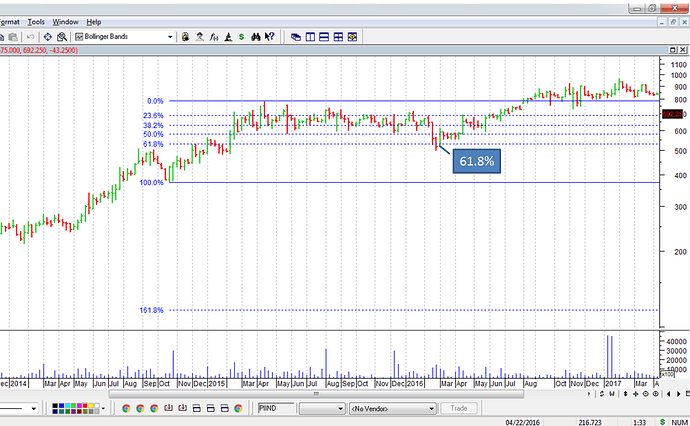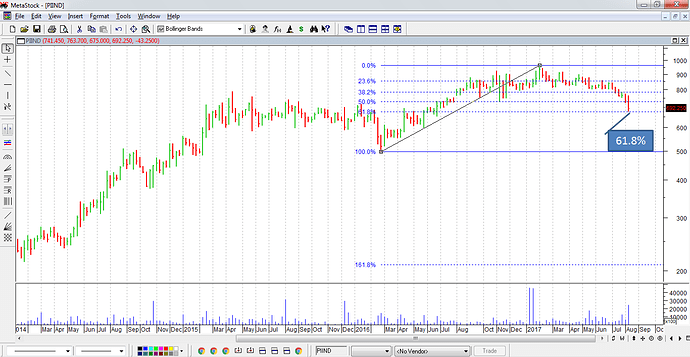Breakup of sales is very important asto which segment has registered aggressive degrowth. In addition, concall commentary will be very important.
Request to readers on the board here. Please do not write obituary like comments about the company. Neither the business model nor the sector opportunities are over and completely done with. I have earlier sold some companies and could never buy at lower prices from where they sky-rocketed after a year or two or three.
Still, question is what will you do if PI goes down to 600 and then 1200 ( hypothetical but say if that happens ) in a year, in six months? This has happened in scores of companies, even in large ones, say Titan, 100%+ in less than a year.
I buy for 3-5 years unless it is a mistake and I get out fast, in a month or so.
I find, this way, for any period of more than a year, performance is better than any mutual fund, even on a relatively large personal portfolio.
Hello,
This post is just for educational purposes. I am sharing it because i found something interesting while looking at the weekly PI chart and I thought it may add value to the general thread. The main risk however comes from not having a sufficient understanding about the business of the company so the post below is just an observation & to be taken as such
There is a difference between retracements/corrections and a downtrend. However, both look similar in form when they are evolving so its difficult to distinguish between them, but you have an edge if you study the personality of the stock.
I looked at all the retracement levels from 2013 to the present date and the output was fun and instructive to me. All the retracements ( without exception) have happened at the main Fib levels.
Retracement 1 - Fib level 38.2%
Retracement 2 - Fib Level 61.8%
Retracement 3 - Fib level 61.8%
Retracement 4 - Fib level 50%
Retracement 5 - Fib level 61.8% again
Retracement 6 ( and the source of all the agony) - Fib level 61.8% again?
Comments/Views/Criticisms invited
Best
Bheeshma
From the annual report, there has been a declining trend of use of agrochemicals around the world for past three years, although they are expecting a trend reversal.
Also Bt cotton has helped farmers reduce use of pesticides/herbicides. GM mustard is the next in line. Although there is a lot of opposition now, GM cotton has helped Indian farmers increase yields, reduce agrochemical costs and helped them make money. Science in the future could make GM crops safer
Increased use of pesticides has led to increased incidences of Cancer.
Iam just looking at the larger picture of use of agrochemicals and its impact on PI.
Domestic business is roughly 40% of their total business. There may be some impact due to de-stocking for Domestic business because Dhanuka has also reported roughly 10% impact for their June 17 quarter sales due to destocking. In case of PI, revenue is down by around 14% that means its likely that there could be some degrowth in Exports business too. This could be due to soft outlook for the global agrochem industry and higher channel inventory. As per Mr. Sarna, rebound is likely to be expected from second quarter of 2018. Management has guided for 10% growth in both domestic and exports business during the last concall for FY18. This quarter’s management commentary needs to observed to see if they maintain the earlier guidance.
Disclosure : Invested hence my views could be biased.
Very exciting commentary from the management. I don’t see much fall in PI tomorrow. If it falls, then it would be an opportune time to invest. 
Kanv
I think we have to consider GST impact this quarter as an exception… Many companies have shown the same trend and across the board its due to Gst…
Now coming to PI… Management commentary is clearly indicating a good long term growth opportunity… Given their track record we surely can trust them and see how this plays out…
Business fundamentals have not changed… The thesis for investing in PI has not changed… Valuations had run up, which now is softening… I would take this as an opportunity to add more…long term decent Compounder is what I believe…
Disc: Invested and hence views might be biased. please do your own research before investing
These are the levels to which prices seem to often correct, expressed as a % of the previous upmove or downmove for e.g 61.8% means that prices have corrected by 61.8% of the previous upmove or downmove.
38.2%, 50%, 61.8% are important levels to watch out for, they help in timing your purchases or sales as prices like to correct to these levels before continuing with the trend.
If prices correct beyond these levels, then the possibility of a trend change increases & in my opinion one should be cognizant of these levels.
Corrections are an integral part of the trend without which a trend cannot progress and also give you a chance to buy at roughly the right moment where any further downside is limited. The chart of PI is just one such example (also have a look at the NIFTY - its roughly at the 61.8% level)
There is also a chance that what you thought was a correction is actually a change in trend but these kind of things are largely mitigated when you buy a company because of its business prospects and not purely based on price movements (which you shouldnt be doing in anycase). In the end, these levels are useful guides and work often enough to be of practical relevance.
Best
Bheeshma
I won’t deny that I was not frustrated by the non performance of the stock price, past year or so. My problems with PI got compounded as not only, my allocation was inappropriate, but my average price was on the higher side, thanks to Dollar cost averaging ( I truly believe now that Dollar cost averaging sucks). I did a thorough research on every fundamental aspect, except the most important one, 'Price". I was desperately looking for answers and wisdom, though I found solace in Mr. Hitesh Patel’s views, but since I did not do the number crunching myself on the price/intrinsic value, I never got the confidence. But upon running through a Common size analysis, getting an estimated EPS for FY18, and running a DCF too(not a fan at all of DCF, but it does give an idea, provided you believe in those numbers) I realized that its just overvalued.
Peter Lynch says that if you know why you bought the stock in the first place, you will also know when to sell.
And the reasons I bought PI for in the first place are still intact and the story is not over yet, it is still coming up with new products, spending on R&D, capex is happening and PI is growing., despite market gyrations. And the most important of all, is the Promoter still passionate about business as he was, as Siddhartha Lal is for Eicher, Achal Bakeri for Symphony. Yes, I do believe, he is.
I was contemplating of entering in some other growth story, forgetting for some time, that I am already in one.
I am not great in valuations but I find it difficult to get good stories, honest/committed management and proven past performance in Indian context at really cheap valuations. I will be grateful if you come across some such companies and share your views.
You are right about difficulty investors face in assigning a PE ratio to a business. Lot of factors go into that decision. The spreadsheet model I use is an attempt to take out the subjectivity in valuation of a business and use industry standard models and techniques to make the whole process objective and free from human sentiments and biases. No model can be perfect but it does take into account profitability, risk, moat, length of growth period etc and arrive at a fair value.
Not many people will like to use a complicated DCF model for valuation but calling it mundane skill is little presumptuous.
@Yogesh_s DCF model is the gold standard in not only valuing but understanding the nitty gritties of any business. Only those who use it can know its value.
Q1FY18 conference call highlights: (my notes might contain errors/mistakes)
Financials:
Revenue 585 Cr breakup Domestic 285 Cr vs 343 Cr YOY (INDAS adjusted); Export 300 Cr Vs 340 Cr YoY
EBITDA 130 Cr with margin 22.3% despite one offs
Margin decline 200 bps YoY – fairly across both the businesses (domestic and export)
EBITDA margin 23-24% long term
PAT 100 Cr
Effective tax rate 18%
Balance sheet position continues to be strong with healthy cash generation. The business is positioned well to fund growth from internal accruals. Net Debt to Equity position stood at 0.05.
-
Domestic revenues moderated despite overall normalized monsoon and increased acreages of key crops due to channel de-stocking on account of GST transition. Expect full year growth rate at 10%, both in domestic and export. Inventories are clearing up, demand is increasing. Softer quarter for exports was in line with planned supply schedules. Double digit growth in orders inquiry. Increased investment in business development.
-
Order book USD 1B fairly concentrated on patented products. Order book is for a longer duration (3-4) years, depending on the contracts with the customers. Order book continues to grow. Strong visibility of growth with a strong order book. PI positioned as a technology led company.
-
Domestic environment: seasonal movements will dictate stock levels in the market. Prices are maintained. Well kept our value proposition of NOMINEE product. NOMINEE GOLD continue to hold market share.
-
Pharma vertical: continue to evaluate, adjacent business opportunities with ability to leverage existing capabilities, advanced stage of due-diligence.
-
Consolidation in Global Agrochem market – gives us more opportunities. PI is a front runner with long term credibility and partner of choice. Growth capex 150 Cr this year. Expect to maintain operating margin. Gross margin – is at multi quarter high – due to product mix, prices in control.
-
Partnership approach
A new product ‘ELITE’, a maize herbicide ahead of the Kharif season was launched during the quarter to further augment PI’s portfolio of novel products. It is just a launch phase – see good potential. The product is launched in partnership with BASF. We also recently introduced ‘HEADER’ and ‘FENDER’ both rice fungicides. PI has strong foothold in rice market. -
Global Agri industry goes through cycles. Long term growth opportunity – 15-20%. Effective tax rate 20-21% from last year 14-15%. Rupee appreciation – board approved hedging policy. Capacity is not liner in this business – this year adding 5 new molecules. Next year 2-3 products.
Consulting project – began this quarter, will continue for next 3 quarters. This is a Strategic initiative – can’t disclose much. -
Augmenting R&D capabilities. Technology will be the key differentiator going forward. 125,000 sq. ft., R&D facility with over 250 scientists is fully operational.
R&D split
a. Long term capability booster 60%
b. Functional in nature for operational requirements 40%
Overall 2-3% in R&D spend
Disc: Invested.
Thanks Amit for concall takeaways…
Just one Correction in Domestic Agri-input revenue figure of last year Q1FY17 – its 343 cr. if we are taking this year Q1FY18’s revenue as 285 cr. (INDAS adjusted)…if we are taking 298 cr figure of last year then this year’s figure is 254 cr…
HDFC post quarterly report gives PI ind the TP of 950 https://www.hdfcsec.com/uat.hsl.docs/PI%20Industries%20-%201QFY18%20-%20HDFC%20sec-201708142136325539798.pdf


